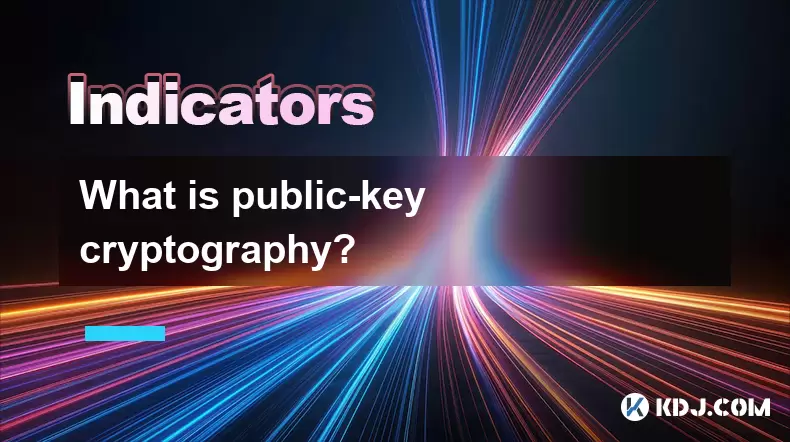-
 Bitcoin
Bitcoin $117900
-2.85% -
 Ethereum
Ethereum $4559
-2.84% -
 XRP
XRP $3.068
-5.67% -
 Tether USDt
Tether USDt $1.000
0.02% -
 BNB
BNB $836.7
-0.81% -
 Solana
Solana $193.2
-2.38% -
 USDC
USDC $0.9998
0.00% -
 TRON
TRON $0.3591
-0.32% -
 Dogecoin
Dogecoin $0.2238
-7.20% -
 Cardano
Cardano $0.9090
4.71% -
 Chainlink
Chainlink $22.55
-4.36% -
 Hyperliquid
Hyperliquid $44.78
-2.41% -
 Sui
Sui $3.771
-4.47% -
 Stellar
Stellar $0.4199
-6.18% -
 Bitcoin Cash
Bitcoin Cash $587.8
-5.02% -
 Ethena USDe
Ethena USDe $1.001
-0.01% -
 Hedera
Hedera $0.2493
-5.06% -
 Avalanche
Avalanche $23.66
-5.54% -
 Litecoin
Litecoin $121.0
-6.80% -
 Toncoin
Toncoin $3.383
-2.39% -
 UNUS SED LEO
UNUS SED LEO $9.287
0.47% -
 Shiba Inu
Shiba Inu $0.00001286
-6.48% -
 Uniswap
Uniswap $10.94
-9.06% -
 Polkadot
Polkadot $3.979
-5.53% -
 OKB
OKB $96.24
-3.88% -
 Dai
Dai $0.9997
0.00% -
 Bitget Token
Bitget Token $4.570
-4.16% -
 Cronos
Cronos $0.1510
-8.87% -
 Ethena
Ethena $0.7251
-6.96% -
 Aave
Aave $310.8
-4.73%
What is public-key cryptography?
Public-key cryptography enables secure cryptocurrency transactions by using a key pair: a public key for verification and a private key for signing, ensuring ownership and integrity without a central authority.
Aug 13, 2025 at 11:36 am

Understanding the Foundations of Public-Key Cryptography
Public-key cryptography, also known as asymmetric cryptography, is a cryptographic system that uses a pair of mathematically related keys to secure digital communication. Unlike symmetric cryptography, which relies on a single shared secret key, public-key cryptography employs two distinct keys: a public key and a private key. The public key can be freely distributed and is used to encrypt messages or verify digital signatures. In contrast, the private key must be kept confidential and is used to decrypt messages or create digital signatures. This dual-key mechanism solves one of the fundamental challenges in secure communication: how to exchange information securely without pre-sharing a secret.
The mathematical relationship between the keys ensures that data encrypted with the public key can only be decrypted using the corresponding private key. Similarly, a digital signature created with the private key can be verified by anyone possessing the public key. This enables secure, authenticated communication across untrusted networks such as the internet, forming the backbone of modern cryptographic protocols used in cryptocurrencies.
Role of Public-Key Cryptography in Blockchain and Cryptocurrencies
In the context of cryptocurrencies like Bitcoin and Ethereum, public-key cryptography is essential for managing ownership and authorizing transactions. When a user creates a cryptocurrency wallet, the system generates a key pair: a private key and a public key. The public key is then used to derive a wallet address, which is shared with others to receive funds. The private key must remain secret, as it grants the ability to sign transactions and spend the associated cryptocurrency.
Each transaction on a blockchain is digitally signed using the sender’s private key. Network nodes verify the signature using the sender’s public key, ensuring that only the rightful owner can authorize transfers. This process prevents fraud and unauthorized access. Without public-key cryptography, the decentralized trust model of blockchains would not be possible, as there would be no secure method to prove ownership without a central authority.
How Digital Signatures Work in Cryptocurrency Transactions
Digital signatures are a critical application of public-key cryptography in cryptocurrencies. When a user initiates a transaction, the wallet software performs the following steps:
- Hash the transaction data to create a unique digital fingerprint.
- Encrypt the hash using the sender’s private key, creating the digital signature.
- Attach the signature and the sender’s public key to the transaction.
Nodes on the network then verify the transaction by:
- Recomputing the hash of the received transaction data.
- Decrypting the signature using the sender’s public key to retrieve the original hash.
- Comparing the two hashes; if they match, the signature is valid.
This process confirms both the integrity of the transaction and the authenticity of the sender. Any alteration to the transaction data would result in a different hash, causing verification to fail. The use of digital signatures ensures that transactions cannot be forged or tampered with.
Generating and Managing Cryptographic Key Pairs
Creating a secure key pair involves using cryptographic algorithms such as Elliptic Curve Digital Signature Algorithm (ECDSA), which is used in Bitcoin. The process begins with generating a random private key, typically a 256-bit number. This randomness is crucial—predictable keys can be easily compromised.
From the private key, the public key is derived through elliptic curve multiplication, a one-way mathematical function. It is computationally infeasible to reverse this process and derive the private key from the public key, ensuring security.
Wallet software handles this process automatically, but users must securely back up their private keys or seed phrases. Losing access to the private key means losing access to the associated funds permanently. Storing keys in hardware wallets or encrypted offline storage is recommended to prevent theft or loss.
Address Derivation and Public Key Hashing
While the public key is used in transaction verification, it is not directly used as a wallet address. Instead, cryptocurrencies apply a series of hash functions to the public key to generate a shorter, more secure address. In Bitcoin, for example, the process involves:
- Applying SHA-256 to the public key.
- Applying RIPEMD-160 to the SHA-256 output.
- Adding a version byte and checksum.
- Encoding the result in Base58Check (or Bech32 for newer formats).
This results in a Bitcoin address that is both compact and resistant to typing errors. The hashing process adds an extra layer of security, making it even more difficult to reverse-engineer the public key from the address, especially before the transaction is broadcast.
Security Considerations and Best Practices
The security of public-key cryptography depends on the secrecy of the private key and the strength of the underlying algorithms. Users must avoid exposing their private keys to untrusted environments. Common attack vectors include phishing, malware, and insecure storage.
Best practices include:
- Using hardware wallets to store private keys offline.
- Avoiding key reuse across different platforms.
- Verifying software authenticity before installing wallet applications.
- Enabling multi-signature schemes where supported, requiring multiple private keys to authorize a transaction.
Even with strong cryptography, human error remains a significant risk. Regular backups, secure recovery methods, and continuous education are essential components of maintaining cryptographic security.
Frequently Asked Questions
Can a public key be used to derive the private key?
No, due to the one-way nature of the mathematical functions used (such as elliptic curve multiplication), it is computationally infeasible to derive the private key from the public key. This property is fundamental to the security of public-key cryptography.
What happens if I lose my private key?
If you lose your private key, you lose access to your cryptocurrency permanently. There is no recovery mechanism, as no central authority can regenerate the key. This underscores the importance of secure backups, such as writing down a seed phrase and storing it in a safe location.
Is it safe to share my public key?
Yes, the public key is designed to be shared. It allows others to verify your signatures or send you funds. However, once a public key is used in a transaction, it becomes visible on the blockchain, potentially reducing privacy. Some wallets use new key pairs for each transaction to enhance anonymity.
How are private keys generated in cryptocurrency wallets?
Wallets use cryptographically secure random number generators to produce a 256-bit private key. This number must be truly random to prevent predictability. The key is then used to derive the public key via elliptic curve cryptography, ensuring a secure and verifiable relationship between the two.
Disclaimer:info@kdj.com
The information provided is not trading advice. kdj.com does not assume any responsibility for any investments made based on the information provided in this article. Cryptocurrencies are highly volatile and it is highly recommended that you invest with caution after thorough research!
If you believe that the content used on this website infringes your copyright, please contact us immediately (info@kdj.com) and we will delete it promptly.
- Kazakhstan's Crypto Leap: Bitcoin ETF and Central Asia's Digital Finance Future
- 2025-08-13 12:45:19
- BlockDAG Presale Blazes Past $371M: Fundraising Frenzy Fuels Crypto Sensation
- 2025-08-13 13:05:21
- Meme Coins: Chasing the 2025 Surge – Which Will Moonshot?
- 2025-08-13 10:25:23
- Bitcoin's Wild Ride: Rally, Pullback, and What's Next
- 2025-08-13 10:25:23
- Bitcoin, Bitmax, and Institutional Demand: A New Era of Crypto Investment
- 2025-08-13 10:45:12
- Solana, ROAM, and Airdrops: What's the Buzz in 2025?
- 2025-08-13 11:35:13
Related knowledge

What does it mean when the +DI and -DI cross frequently in the DMI indicator but the ADX is flattening?
Aug 11,2025 at 03:15am
Understanding the DMI Indicator ComponentsThe Directional Movement Index (DMI) is a technical analysis tool composed of three lines: the +DI (Positive...

What does the sudden appearance of a "dark cloud cover" candlestick pattern during an uptrend indicate?
Aug 13,2025 at 11:35am
Understanding the 'Dark Cloud Cover' Candlestick PatternThe dark cloud cover is a bearish reversal pattern in technical analysis that typically appear...

What does it mean when the moving average, MACD, and RSI all send buy signals simultaneously?
Aug 11,2025 at 01:42pm
Understanding the Convergence of Technical IndicatorsWhen the moving average, MACD, and RSI all generate buy signals at the same time, traders interpr...

What does it mean when both the KDJ indicator and the RSI show overbought signals simultaneously?
Aug 13,2025 at 11:35am
Understanding the KDJ Indicator in Cryptocurrency TradingThe KDJ indicator is a momentum oscillator derived from the Stochastic Oscillator, widely use...

What does it mean when the price is trading above the SAR indicator but the red dots are densely packed?
Aug 09,2025 at 11:49pm
Understanding the SAR Indicator and Its Visual SignalsThe SAR (Parabolic Stop and Reverse) indicator is a technical analysis tool used primarily to de...

What does it mean when the candlestick chart forms a "Morning Star" but trading volume is sluggish?
Aug 12,2025 at 06:28pm
Understanding the Morning Star Candlestick PatternThe Morning Star is a three-candle bullish reversal pattern commonly observed in cryptocurrency pric...

What does it mean when the +DI and -DI cross frequently in the DMI indicator but the ADX is flattening?
Aug 11,2025 at 03:15am
Understanding the DMI Indicator ComponentsThe Directional Movement Index (DMI) is a technical analysis tool composed of three lines: the +DI (Positive...

What does the sudden appearance of a "dark cloud cover" candlestick pattern during an uptrend indicate?
Aug 13,2025 at 11:35am
Understanding the 'Dark Cloud Cover' Candlestick PatternThe dark cloud cover is a bearish reversal pattern in technical analysis that typically appear...

What does it mean when the moving average, MACD, and RSI all send buy signals simultaneously?
Aug 11,2025 at 01:42pm
Understanding the Convergence of Technical IndicatorsWhen the moving average, MACD, and RSI all generate buy signals at the same time, traders interpr...

What does it mean when both the KDJ indicator and the RSI show overbought signals simultaneously?
Aug 13,2025 at 11:35am
Understanding the KDJ Indicator in Cryptocurrency TradingThe KDJ indicator is a momentum oscillator derived from the Stochastic Oscillator, widely use...

What does it mean when the price is trading above the SAR indicator but the red dots are densely packed?
Aug 09,2025 at 11:49pm
Understanding the SAR Indicator and Its Visual SignalsThe SAR (Parabolic Stop and Reverse) indicator is a technical analysis tool used primarily to de...

What does it mean when the candlestick chart forms a "Morning Star" but trading volume is sluggish?
Aug 12,2025 at 06:28pm
Understanding the Morning Star Candlestick PatternThe Morning Star is a three-candle bullish reversal pattern commonly observed in cryptocurrency pric...
See all articles

























































































